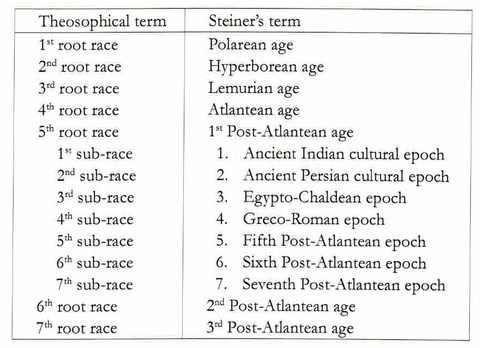Sunday 12 MayAnthroposophy in Hawkes BayNewsletter 19, 2024 Calendar of Coming Events-- Diary Dates In the Rudolf Steiner Centre, 401 Whitehead Road, Hastings (** see below for more details.)
** THEMES FROM WAGNER'S PARSIFAL - a continuing workshop or conversation with Eva Knausenberger- Friday, 17 May at 7 p.m. at the Centre, 401 Whitehead Road, Hastings. Eva gave an introduction to the libretto of Wagner's Parsifal in April. From the Libretto we can understand 'The Spear', which wounded Amfortas, to be the representative of the human morality; in other words, without morality, the healing life forces will bleed out of us. It is my hope, that on Friday 17th we can together explore further the topics of the Spear, The Wound, and Kundry in the light of Anthroposophy. Birds From Blowhard Bush You will notice that a flock of birds representing Blowhard Bush has migrated onto the entrance table at the Centre and will be resting there on these colder days for a month or so.
In 2023, 13 artists from around NZ were selected by the NZ Forest and Bird Society to each work with one NZ poet and present a joint contribution about a special place in NZ. This was to commemorate 100 years that the Forest and Bird Society has been working in NZ to care for our environment.
Sophie Lankovsky was one of the artists selected and her ceramic sculpture has created a space where these birds from Blowhard Bush can rest. The article from the Forest and Bird magazine is on the notice board above the sculpture and explains the inspirations of Sophie and the poet with whom she worked.
Other art works In the foyer are by Clayton Gibson, Sonja Lethbridge, Andrea Beech, Kathy Allan and myself.
Diana Bacchus. Library News A new booklet: Michaela Glöckler (2023) “The Task of the General Anthroposophical Society in the 21st Century” 9781915594013 is now in the Library. Some notes: It is an essay written in a conversational style examining questions faced by members 100 years after the GAS founding. One thing that caught my attention was the notion that ancient, pre-Christian mysteries were called mysteries of wisdom, while the new Christian mysteries were mysteries of the will. The ancient mysteries imparted knowledge about the evolution of humanity, but only to select people – Initiates - in the inner part of the Temples. What happened inside the Temple was called esoteric; what happened in public, in the courtyard of the Temple was called exoteric. The mysteries of wisdom were kept strictly secret, hidden or occult. Apocalypse means ’revelation’. The mystery of Golgotha, Christ’s death on the cross, was unfolded openly and revealed in plain public view. The dissemination of anthroposophical cultural impulses comes ‘from within’, from the will. The secret mysteries have rituals for selecting leadership for continuity of succession. The principle applying to the new mysteries is that everyone or anyone can seek a connection with the source of divine inspiration out of the innermost freedom of conscience. Knowledge arises from sorrow; it is born from pain. And this pain must lead us to take hold of our tasks with an even stronger will. The task of the General Anthroposophical Society is to serve humanity selflessly. As humanity evolves, the more individual we become the more we can become bearers of love. When people are linked by blood, they love because the blood guides them towards this love. As we are granted individuality, we begin to nurture the divine spark within us; the impulses of love, the waves of love from one person to another must then arise from free hearts. [Love gradually develops in a lifetime from physical love ‘eros’ of youth, to soul love ‘philia’ of maturity, to spiritual love ‘agape’ of old age.] Love flows from soul to soul and will ultimately encompass all humanity in a common bond of universal love. Evolutionary Ages If you have ever wondered about Steiner's use of the term race, the following diagram (from Paul King, editor of The Occult Truths of Myths and Legends) helps explain. When he first started lecturing to the German Section of the Theosophical Society Rudolf Steiner used terms that they were familiar with from Helena Petrova Blavatsky's writing, then after several years he introduced his own terms which more clearly indicated that he was speaking of time periods of earth and human development, not races of people.
Light in the earth's atmosphere:
Editor: Robin Bacchus
Posted: Sat 11 May 2024 |
| © Copyright 2025 Anthroposophy in Hawkes Bay | Site map | Website World - Website Builder NZ |


